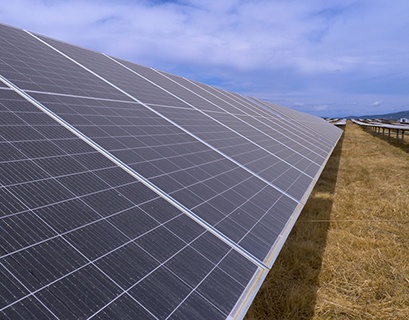News
-
19/08/2022The technology fund Andromeda closes its first investment: it is landing in the construction company 011h Andromeda, Spain's first major technology fund to accelerate the energy transition and sustainability, launched last May by Iberdrola , the ICO Next Tech Fund, Nortia Capital and Seaya, has already begun to seed. It has entered the capital of the construction company 011h, focused on the transition to a sustainable world thanks to the design and construction of carbon neutral buildings. In this way, it becomes the first investment of this investment vehicle. Founded in late 2020, 011h Construction ensures that it places sustainability, quality and people at the heart of its business, with the aim of mitigating climate change and providing access to affordable, healthy and sustainable housing. The builder has standardised and digitalised the construction process to make it easily repeatable and scalable, while incorporating sustainable principles and materials and preserving design flexibility. This enables architects, contractors, developers and investors to design, construct and manage quality buildings faster, more reliably and cost-effectively. In addition to Andromeda, the financing round, with which 011h has raised 25 million euros, also involved the Swiss venture capital firm Redalpine, France's Breega and Spain's Aldea Ventures, among other investors. The company is committed to optimising the construction process along the entire value chain: use of materials, labour and the design, manufacturing and assembly processes. The aim is to standardise methods and make them easily repeatable and scalable. In addition, it will only rely on partners with high standards in ESG (environmental, social and governance) criteria that assume activities in assets and labour (materials and external manufacturers), but deeply integrated in design and operations. A few months ago, the company completed a residential building in l'Hospitalet de Llobregat (Barcelona) with which it achieved several milestones. CO2 emissions in the construction were reduced by more than 90% compared to conventional methods and deadlines were reduced by 35%. Now, 011h is in the process of building a block of flats in San Juan de Alicante (Alicante). Andromeda is the first large technology Andromeda, the first large technology fund in Spain venture capital fund to have concrete sustainability objectives in line with Article 9 of the EU Regulation, with clear and measurable environmental, sustainability and governance (ESG) criteria. The fund, which aims to have a size of EUR 300 million, is born with public participation of up to €100 million through the Next Tech Fund. This project is part of the Government's Recovery, Transformation and Resilience Plan, which promotes public-private collaboration in innovative digital projects in high-impact technologies and the development of scale-ups that generate quality employment. The role of innovation with PERSEO With its participation in Andromeda, Iberdrola took a further step towards entrepreneurship and technological leadership through its PERSEO start-up programme , which aims to facilitate the group's access to the technologies of the future and foster the collaboration and development of a global ecosystem of technological and innovative companies in the electricity sector. The programme has focused its activities on the analysis of business opportunities and technological collaboration with start-ups and emerging companies around the world, analysing 300 companies each year and creating an ecosystem of almost 7,500 entrepreneurial companies from more than 35 countries. Since its creation, the programme has invested €100 million in supporting open innovation and creating synergies with start-ups developing innovative technologies and business models. READ MORE
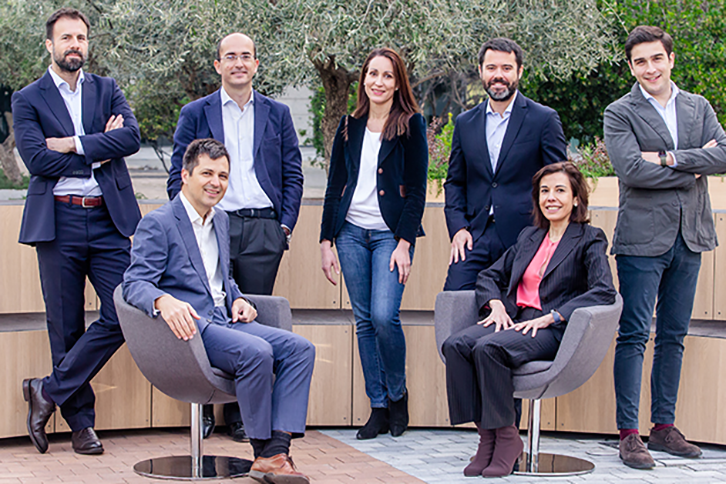
-
18/08/2022Iberdrola connects 4,300 MW of renewables in Spain thanks to grid access facilities for new generators Iberdrola has connected 4,300 MW to the electricity system in the last year and a half, almost all of it renewable, owned by individuals, small and large companies. This boost has been possible thanks to the redesign of the grid access and connection process carried out by i-DE, its distributor in Spain, which facilitates the connection of other producers. This new, simpler and more transparent procedure has enabled more than 2,000 new generation plants to be incorporated into the grid, with a combined installed capacity equivalent to the energy consumed by two million households. These installations will avoid the emission of 3.6 million tonnes of CO2 per year. With this new process, Iberdrola aims to advance in the transition towards a more sustainable energy model based on clean sources. By speeding up the connection of new renewable plants to its grid, it is also helping to move towards energy independence. The new standard also provides transparency and generates sufficient confidence to attract the necessary investments for the development of the infrastructures that make the decarbonisation process possible. The redesign has included the development of an interactive geographic capacity map , available to any customer via i-DE's website (www.i-de.es). This map makes it possible to consult the capacity of all lines operated by the company and to identify the location of access points. It is also the first step in the process of interaction between the new generators and the distribution company through a pioneering IT system that allows standardisation of documents and content, as well as monitoring of deadlines to facilitate early detection of any incident. This comprehensive process brings a double benefit. On the one hand, it responds to all requests from agents interested in accessing and connecting to i-DE's grids within the framework of the legally established deadlines and conditions. On the other hand, it also provides generators, whether individuals or companies, with useful and updated information on the network and the costs and conditions in each particular case. This increases the likelihood of successful processing of individual renewable energy projects. Distribution networks, key to the success of the energy transition Distribution networks have become key to the success of the energy transition. They are the element underpinning the change from a centralised model, where energy comes from large power plants located far from consumption points, to a decentralised model, in which distributed resources - such as self-consumption, storage or electric vehicles - are integrated in a capillary manner into the distribution network, from Low Voltage to higher voltage grids. This change implies great technical complexity in managing an increasingly efficient grid, thanks to digitalisation and the incorporation of flexibility to adapt to changing demand conditions and the volume of energy fed into the grid. i-DE manages and maintains 270,000 kilometres of electricity distribution lines in 10 autonomous communities and 25 provinces, covering an area of 200,339 square kilometres. It also has more than 97,000 transformer stations and more than 1,100 substations to provide service to its more than 11 million customers. READ MORE
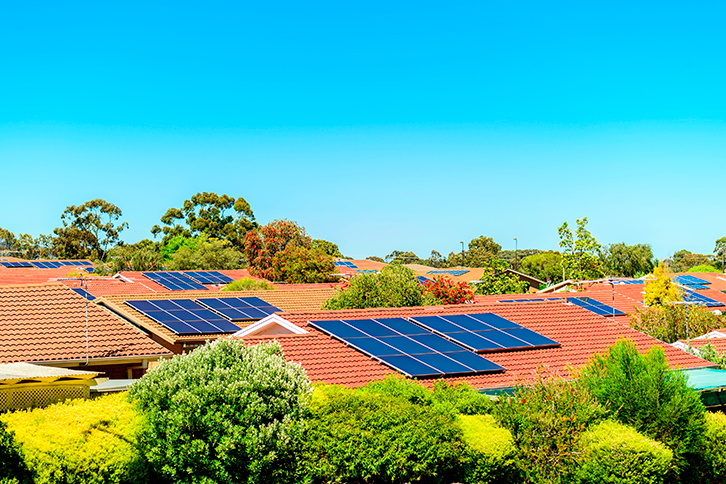
-
17/08/2022Iberdrola aims to design offshore wind farms that protect the environment Iberdrola's offshore wind farms will respect nature to the fullest extent possible and contribute to improving the diversity of life in the oceans. This is what Iberdrola has set out to achieve and has launched a new challenge through its start-up programme, PERSEO . Offshore wind will be one of the essential pillars of Iberdrola's future growth, which already has 1,258 MW in operation and 5,500 MW under construction or secured, which will start operating thanks to investments of around 30 billion worldwide in this decade. Preserving the planet and promoting the well-being of people are priorities in Iberdrola's strategy, and in a context of intense growth in global energy demand, the company continues to work to build an energy model in harmony with nature and human beings. Offshore wind is a clean energy generation technology and one of the driving forces of Iberdrola’s future. The mission now is for its offshore wind farms to preserve habitats and enhance the biodiversity of marine life. In this way, the company is launching a call to the market for start-ups to submit high-quality, innovative proposals that seek to develop, test or monitor solutions that take nature into account and that can be applied in an offshore wind farm environment. Two decades ago, the group was a pioneer in the development of onshore wind energy and now it is also a pioneer in offshore wind energy and in making offshore wind energy as environmentally friendly as possible. Iberdrola, one of the three most innovative utilities on the planet, proposes, as a starting point, implementing solutions that protect infrastructures and submarine cables from underwater scour. For example, the use of sustainable materials, a specific design that promotes marine biodiversity or the planting of algae. The company also suggests including space for nature in the foundations, such as seal breeding platforms, artificial reef structures or shellfish nurseries. Other issues include reducing the risk of wind turbine collisions or blue carbon sequestration initiatives to promote ecosystem growth, healthy marine habitats and combat climate change due to greenhouse gases. The selected initiative will be developed in collaboration with Iberdrola's Renewables business technicians, among others, who could offer the winner the opportunity to scale up the solution, adopting it through commercial agreements, or even invest in the company to support its growth. The registration period for the challenge has just started and will end on 30 September. Submissions will be received globally. A leader in offshore Iberdrola has taken a giant step forward in offshore technology, with almost 1,300 MW in operation at the end of June, in addition to the 5,500 MW under construction or secured and a large portfolio of projects under development. In the first half of the year, the group's total offshore wind generation reached 2,300 GWh. Iberdrola's current portfolio includes projects in the UK (3,100 MW), the US (1,200 MW) and Japan (1,800 MW), and the future investment horizon is very broad, with a multitude of countries with major growth plans. These include Poland (5 GW of capacity, to be auctioned), the UK (10 GW), the US (37 GW), Ireland (5 GW national target between 2022 and 2025), France (1.6 GW), Denmark (1 GW), the Netherlands (1.4 GW), South Korea (12 GW), Vietnam (2 GW) and Taiwan, (9 GW). PERSEO, an example of commitment to start-ups Since its creation in 2008, PERSEO has invested more than 100 million euros in start-ups that develop innovative technologies and business models, focusing on those that improve the sustainability of the energy sector through further electrification and decarbonisation of the economy. The programme has focused its activities on analysing business opportunities and technological collaboration with start-ups and emerging companies around the world, analysing 300 companies each year and creating an ecosystem of almost 7,000 entrepreneurial companies. This investment instrument currently holds a portfolio of eight companies. Through PERSEO, Iberdrola carries out more than 25 real tests of technologies per year, which serve as a first step towards establishing a commercial relationship or partnership with start-ups. In addition, in the last two years the group has launched a total of fourteen challenges in which 700 start-ups have participated. The last major milestone in the history of PERSEO dates back to last May, when it joined Andromeda , the first large technology venture capital fund with specific objectives in sustainability. The fund, which aims to have a size of 300 million euros, was born with, in addition to Iberdrola, public participation through the ICO Next Tech Fund, with that of Nortia Capital and Seaya Ventures, which is responsible for its management. READ MORE
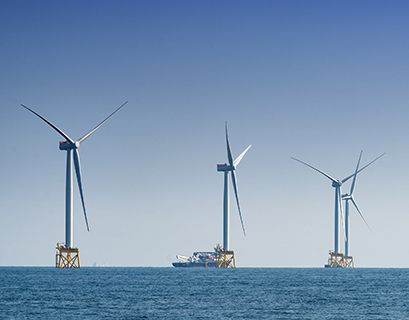
-
15/08/2022Iberdrola commissions Algeruz II, its first photovoltaic plant in Portugal Iberdrola continues to make progress with its investment strategy in the Iberian Peninsula, with the commissioning of the Algeruz II photovoltaic plant, the group's first facility of this type in Portugal. The plant has more than 50,500 fixed, monofacial photovoltaic modules, which will generate enough clean energy to supply more than 11,000 homes and prevent the emission of 13,400 tonnes of CO2 into the atmosphere per year. The project, which has involved an investment of €17.8 million, has generated more than 200 jobs during peak construction periods, all of them filled by local workers. Iberdrola was the largest successful bidder in terms of number of lots in the 2019 auction in Portugal with a total of 7 PV projects (7 lots), three of which are under construction and are expected to enter commercial operation during the year. These are the Conde (13.51 MW), Alcochete I (32.89 MW) and Alcochete II (12.72 MW) PV plants, also located in the Setúbal district. The Alcochete I and II projects will have bifacial technology that maximises energy production and reduces the average cost of electricity by 16%. In addition, the Montechoro I (11.57 MW), Montechoro II (24.95 MW) and Carregado (64.1 MW) projects, awarded in the same auction, are in the process of obtaining the construction licence and are scheduled to be commissioned in 2023, at which time Iberdrola's PV capacity in Portugal will total 187 MW. Renewable commitment to Portugal Iberdrola has been leading the energy transition for two decades, acting as a key driving force in the transformation of the industrial fabric and the green recovery of the economy and employment. To this end, the company has launched a historic investment plan of 150 billion euros over the next decade - 75 billion euros by 2025 - with which to triple renewable capacity, double network assets and commit to clean and sustainable consumption. In the current context, accelerating the energy transition is essential to reduce dependence on fossil fuels and combat the effects of climate change. In Portugal, Iberdrola serves a large commercial portfolio of customers, has 92 MW of wind power in operation and has commissioned the Daivões (conventional plant) and Gouvães (pumped-storage plant) hydroelectric plants, which are part of the Támega River gigabattery - one of the largest energy storage facilities in Europe with 1,158 MW of capacity - and which has required an investment of more than 1.5 billion euros. In addition to this, a large wind farm with a planned total capacity of 400 MW will be built in the future, linked to the gigabattery, which will turn the complex into a hybrid generation plant. This will allow users to consume wind energy during periods of peak demand and use the surplus to power the pumping system, helping to improve the efficiency of the system and guarantee electricity supply. Iberdrola will thus be able to manage supply and demand with hydroelectric and wind technologies, depending READ MORE
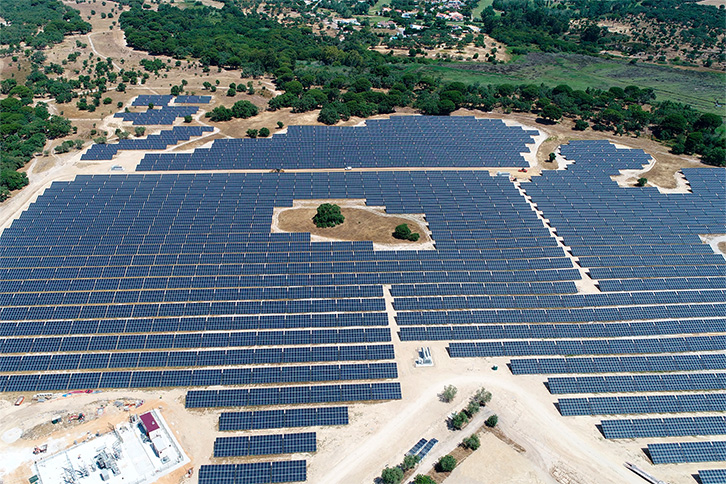
-
12/08/2022Iberdrola's Hub in Bilbao consolidates with 75 companies and collaborating entities The Global Smart Grids Innovation Hub -GSGIH-, which Iberdrola has in Bilbao, is consolidating its position ten months after its inauguration as the world centre for innovation in smart grids. There are now 75 collaborating entities and companies for the development of grid digitalisation solutions, integration of renewables, deployment of electric vehicles and energy storage systems. The latest to join the Iberdrola Hub in Bilbao are IBM Technology, IBM Consulting, Schaffner, Automa and NTT Data, which are leading innovation projects to improve customer service; and Turning Tables, INESC TEC and the universities of Murcia and Comillas, with projects to achieve a more efficient grid by applying flexibility to accelerate decarbonisation. Iberdrola invested more than €337 million in R&D&I in 2021, 15% more than in 2020. Part of the resources have been directed to projects related to smart grids. It should be noted that, among the achievements of the GSGIH in these first months of operation, is the identification of R&D&I projects underway for a total estimated investment of €32 million in Iberdrola Redes España. The Iberdrola Hub, which has the collaboration of the Provincial Council of Bizkaia, is a hub for innovation and open collaboration to develop solutions between manufacturers and start-ups. In this way, it promotes innovation projects in smart grids that respond to the challenges of smart grids in the coming years. This collaboration is key to the generation of projects in which i-DE's technical experts transparently analyse, together with the companies most active in R&D&I, the needs of the Business in order to prioritise the lines of work in the new technologies available. In the same way, the challenges proposed by the Hub stimulate the development of possible solutions, thanks to the start-ups. The Hub's growth pole This public-private collaboration space -with more than 1,000 m2 and located at Iberdrola's network headquarters in Larraskitu- is a pole of attraction for talent and the promotion of new technologies that will make the energy transition possible, maximising the use of renewables, fully integrating energy storage systems and optimising access to new uses of electricity, such as mobility and air conditioning. Moreover, it is also an international collaborative project, bringing together the potential of more than 200 professionals in the development of innovation projects to be developed in countries in Europe, America and the Middle East. Another priority objective of the Global Smart Grids Innovation Hub is to promote knowledge transfer through scholarships and postgraduate courses; it serves as a catalyst for business development through incubation and acceleration programmes for start-ups; and active competitive intelligence actions, such as the design of global conferences. Another of the main lines of action revolves around the connected worker and the robotisation of operations, with the aim of using sensorised equipment to receive real-time information on risks and anomalies in the network. It also uses terrestrial and aerial robots (drones) to perform operations remotely, avoiding travel and working more safely and efficiently. The Global Smart Grids Innovation Hub is connected to the Biscay Startup Bay strategy, as it will also become a scaleup location for startups in the energy sector that set up in the Biscay Tower. READ MORE
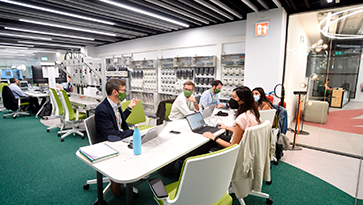
-
12/08/2022Iberdrola completes 90% of the manufacturing of the transition parts of Baltic Eagle The Iberdrola group continues to make progress in the construction of the Baltic Eagle offshore wind farm, the second major site of this technology that the company is developing in the Baltic Sea (Germany). The project has reached a new milestone with Windar having completed 90% of the manufacturing work on the 50 transition parts of the wind farm, which will join the wind turbine towers to the foundations. This work, which is being carried out at Windar's facilities in Avilés, will involve 1.3 million hours of work, the equivalent of 800 jobs. Some 30 suppliers of the Asturian company in Spain are participating in the process, including steel production companies, components, equipment, testing and auxiliary machinery. The production of these parts - each of which is 15 metres high, 6.5 metres in diameter and weighs 240 tonnes - will continue until the end of this year. Windar will also be responsible for supplying the transition parts for the Vineyard Wind 1 offshore wind farm that Iberdrola is developing in the United States off the coast of Massachusetts, which, with 800 megawatts (MW) of power, will be the first commercial-scale facility of its kind in the country. In addition, the Asturian company has manufactured the piles for the Saint-Brieuc wind farm (500 MW) - the Iberdrola group's first large offshore wind farm in France - as part of the contract awarded to the Navantia-Windar consortium for the development of this project, which has created more than 1,000 direct jobs in Avilés and Fene. These awards are in addition to the framework contract reached between Iberdrola and Navantia-Windar for the manufacture and supply of 130 XXL monopiles. In total, Iberdrola has so far awarded contracts worth more than €1 billion to this consortium, including the orders already completed for East Anglia One in the UK and Wikinger in the Baltic Sea. The largest offshore wind power complex in the Baltic Sea With a capacity of 476 MW, Baltic Eagle will have 50 wind turbines with a unit capacity of 9.53 MW on monopiles, for an annual production of 1.9 TWh, enough to sustainably meet the demand of 475,000 households and avoid the emission of almost one million tonnes of CO2 into the atmosphere each year. Baltic Eagle represents the second major offshore wind initiative promoted by the Iberdrola group in Germany, following the commissioning of the Wikinger offshore wind farm (350 MW) at the end of 2017. The company is also developing another offshore facility in Germany: Windanker (300 MW). These three renewable facilities, located next to the island of Rügen, will give rise to the largest offshore wind complex in the Baltic Sea, with a total installed capacity of 1,100 MW and a combined investment of approximately 3.5 billion euros. Baltic Eagle and Wikinger, with a combined capacity of 826 MW, will become the heart of the Baltic Sea Hub, a renewable hub in the Baltic Sea that will act as an epicentre for offshore and onshore wind services. They will be able to produce enough energy to cover 45% of Mecklenburg-Western Pomerania's total electricity consumption and will save 1.65 million tonnes of CO2 per year. Offshore wind power, key to Iberdrola's growth Just as the Iberdrola group pioneered the development of onshore wind power more than two decades ago, the company is now leading the development of offshore wind power, one of the keys to the company's growth, on which it began its commitment 15 years ago. Thus, of the 7,000 MW of wind power currently under construction or secured with PPAs, more than 5,500 MW (78.5%) correspond to offshore projects. Iberdrola already has three large offshore complexes in operation: East Anglia ONE and West of Duddon Sands in the United Kingdom (more than 1,100 MW together) and Wikinger (350 MW) in Germany. Iberdrola has a significant portfolio of projects in this technology focused on countries with ambitious decarbonisation targets. In the coming years, the company will invest around €30 billion worldwide with the aim of reaching 12,000 MW of offshore wind energy in operation by 2030. READ MORE
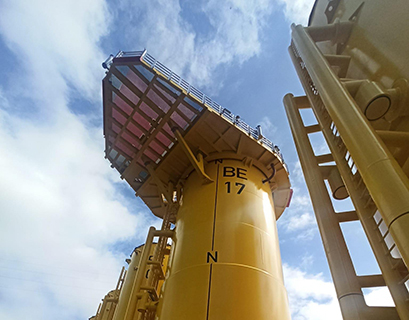
-
11/08/2022Iberdrola starts construction of the 1,400 MW East Anglia Three offshore wind farm in the UK Iberdrola has begun construction in the UK of the East Anglia Three offshore wind farm, which will have a capacity of 1,400 megawatts (MW), enough to supply 1.3 million homes with clean energy, more than the populations of Liverpool and Glasgow combined. This new facility, located off the coast of Norfolk, near the London metropolitan area, will form part of the East Anglia Hub macro-complex , together with the future East Anglia One North and East Anglia Two developments. This hub is the Iberdrola group's largest initiative for this technology in the world and will involve an investment of £6.5 billion (around €7.7 billion) for the installation of 3,000 MW, which represents 6% of the 50 GW offshore wind energy target set by the UK government for 2030. The new farm is in addition to the one already operated by the company through its subsidiary ScottishPower in the same area, called East Anglia One, with 714 MW, capable of producing renewable energy for 630,000 British homes. Construction work on this plant, which is expected to start production in 2026, has begun on the ground. The initial phase will focus on the installation in the county of Suffolk, in collaboration with Siemens, of the onshore substation that will connect the park to the National Grid electricity grid and the cable route, awarded to NKT. East Anglia Three will cover an area of up to 305 square kilometres and will require the installation of more than a hundred new generation wind turbines, which will be up to 247 metres high, the equivalent of two and a half times the size of Big Ben (96 metres). This major electricity infrastructure will also include four offshore substations, an offshore platform to house the operations accommodation and four submarine cables for exporting the energy produced by the wind farm, located 69 kilometres offshore, to the coast. The construction of the East Anglia hub will provide a significant boost to the UK and European offshore wind supply chain and will create up to 7,000 jobs. The company's seventh offshore wind farm in the world East Anglia Three will become the company's seventh offshore wind farm in operation. The group has already commissioned West of Duddon Sands (195 MW) in the Irish Sea; Wikinger (350 MW) in German waters of the Baltic Sea; and East Anglia ONE. The company also currently has three other large offshore facilities under construction. In France, it is making progress on the installation of what will be its first large offshore wind farm in the country, Saint-Brieuc, which, with a capacity of almost 500 MW and an investment of 2,500 euros, will generate enough clean energy to meet the electricity consumption of 835,000 people, once it comes into operation in 2023. In the United States, Iberdrola is building what will be the country's first commercial-scale wind farm, Vineyard Wind 1 (806 MW), off the coast of the state of Massachusetts, with an investment of some €2.5 billion. This facility will be able to meet the energy needs of more than 400,000 homes and will prevent the emission of more than 1.6 million tonnes of CO2 per year. In Germany, the group has started to build its second major offshore wind initiative in the country, after Wikinger. The 476 MW wind farm, called Baltic Eagle, will be able to meet the demand of 475,000 homes and avoid the emission of almost one million tonnes of CO2 into the atmosphere each year. The company also plans to develop a third marine project in this area: Windanker (300 MW). Together, the three renewable facilities will give rise to the largest offshore wind complex in the Baltic Sea, with a total installed capacity of 1,100 MW and a combined investment of approximately €3.5 billion. Offshore wind power, key to Iberdrola's growth Just as the Iberdrola group pioneered the development of onshore wind power more than two decades ago, the company is now leading the development of offshore wind power, one of the keys to the company's growth, on which it began its commitment 15 years ago. Thus, of the 7,000 MW of wind power currently under construction or secured with long-term contracts (PPA), more than 5,500 MW (78.5%) correspond to offshore projects. This technology has already contributed 30% of the group's new installed capacity at the end of the first half of the year. Focused on countries with ambitious renewable targets, the company has a significant portfolio of projects in Germany, Japan, Sweden, Ireland, Poland, Taiwan and the Philippines, the United States and the United Kingdom. In the coming years, Iberdrola will invest around €30 billion worldwide with the aim of reaching 12,000 MW of offshore wind energy in operation by 2030. READ MORE
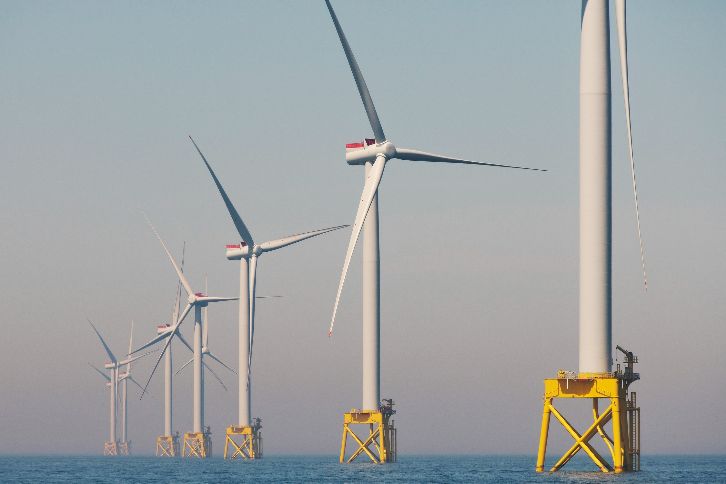
-
10/08/2022Iberdrola starts up 'Francisco Pizarro', the largest photovoltaic plant in Europe Iberdrola has put into operation the 'Francisco Pizarro' project in Extremadura, the largest photovoltaic plant in Europe and the largest facility of this type operated by the group in the world. Located between the municipalities of Torrecillas de la Tiesta and Aldeacentenera (Cáceres), the plant has an installed capacity of 590 megawatts (MW). Francisco Pizarro' is made up of around 1.5 million photovoltaic modules that will generate enough clean energy to supply more than 334,000 homes - more than the populations of Badajoz, Cáceres, Plasencia and Don Benito combined - and will prevent the emission of 150,000 tonnes of CO2 into the atmosphere per year. The project, which has involved an investment of more than 300 million euros, has generated more than 1,500 jobs during peak construction periods, 60% of which were filled by local workers. Iberdrola has guaranteed the viability of this project by signing long-term power purchase agreements (PPAs) with leading companies in different sectors. Thus, the company will supply 100% renewable electricity from this plant to Danone, Bayer and PepsiCo to cover the energy needs of their centres in Spain. These contracts bring stability to investments and have become an optimal tool for managing the electricity supply of large customers committed to accelerating the energy transition to reduce dependence on fossil fuels and to clean and sustainable consumption. Coexistence with the environment and cultural heritage The 'Francisco Pizarro' photovoltaic plant is an example of the coexistence of new renewable developments with environmental and cultural heritage. During the execution of the project, Iberdrola has guaranteed at all times the preservation of the natural environment and the archaeological remains discovered thanks to the previous prospecting work. Specifically, some twenty rock formations with rock art, mainly prehistoric, and three archaeological sites dating from the Ancient and Medieval periods were located. Following the discovery, all the necessary measures were taken for the control, excavation and safeguarding of these remains by the company. In terms of environmental protection, specific measures were taken to improve forest fauna habitats, such as the creation of a controlled reproduction centre for rabbit breeding, the installation of nesting boxes and the establishment of bird feeding protection areas. Iberdrola also participated in the Spanish Ornithological Society's (SEO) campaign to monitor steppe birds in Extremadura, identifying and protecting a breeding area for these birds, specifically the little bustard. In addition, the plant has an environmental integration plan that allows the land to be used as pasture for sheep farming in the area. Commitment to an inexhaustible source of energy accessible to everyone The Iberdrola group leads the renewable energy sector in Spain with an installed capacity of more than 19,300 MW, which will reach 25,000 MW in the coming years thanks to its investment plan. The company plans to allocate 14.3 billion by 2025 to the deployment of an ambitious renewables and smart grids plan. Extremadura will play a key role in this development. In the period 2020-2025 alone, the company will have installed more than 2,800 MW of renewable energy in the region, with an investment of more than 1,700 million euros, which will have generated some 7,400 jobs over the five-year period. This inexhaustible green energy source will be key to the energy transition by enabling the production of electricity on a large scale, as in the case of the Francisco Pizarro plant, and through small generators thanks to self-consumption. Iberdrola, which already manages 40% of the self-consumption installations in Spain, will continue to be a driving force in the coming years for this technology which, in addition to reducing energy bills, protects against potential variations in energy prices and enables the generation of CO2 emission-free energy.; READ MORE
